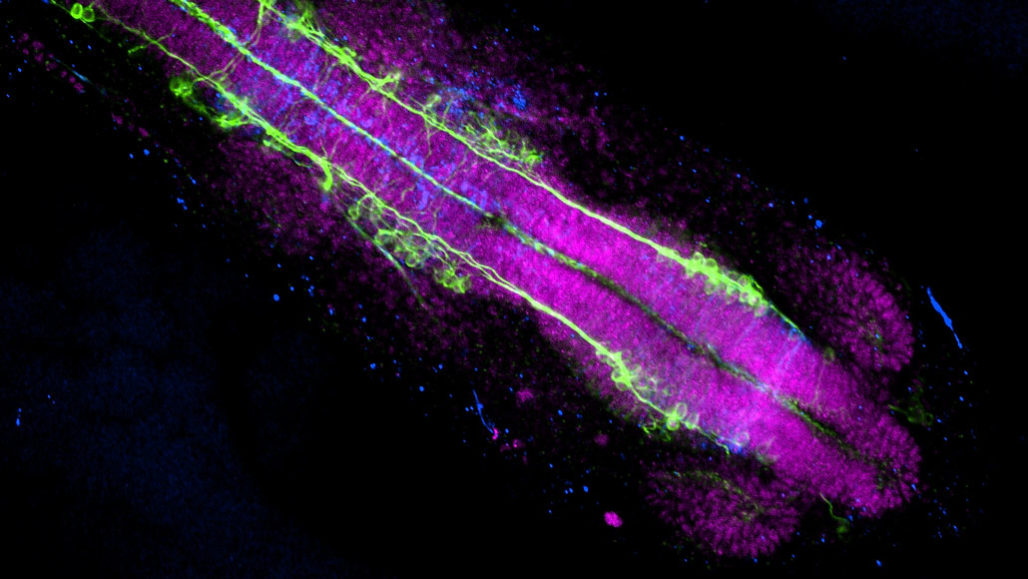|
World Future Day is March 1. This will be the
seventh year that futurists and the general public will conduct a
24-hour, round-the-world conversation on the future on March 1 at
12 noon in whatever time zone they are in. Each year, total
strangers discuss ideas about possible worlds of tomorrow in a
relaxed, open, no-agenda conversation. “Anybody can pull up a
cyber-chair at this global table and join the discussion on ZOOM
at: https://zoom.us/j/9795262723,”
says Jerome Glenn, CEO of The Millennium Project. Jerry is a
friend of IRI and one of our former speakers at COFE3 at the
Washington Hilton in 2009. This world event is free and worth
participating in on March 1st for the sake of the world’s future.
Our Twelfth Conference on Future Energy (COFE12) www.futurenergy.org is
almost filled up with speakers but if there are any interest
parties who would like to send in their title, abstract, and bio
to iri@erols.com we may be
able to fit you in for August 14-15, 2020, if you send the
information in right away.
Our leading first story is an amazing discovery
that could make the difference in accelerating the renewable
energy and renewable protein (food) adoption for the near future
instead of the far future. Air-Gen offering a new form of
electricity generation from ambient humidity with the help of
bacteria (which our FE eNews has six (6) other similar past
stories archived but they have a 0.5 volt output at 17 microamps,
which is very impressive for IC chips for example. Check out the
Related Stories for other discoveries that make protein out of
carbon dioxide, air, and electricity which also has NASA’s
approval. This is a great collection of green technologies worth
forwarding to your friends, colleagues, students, and political
representative.
Story #2 is an update on the UK effort toward
mastering fusion power, which uses the same method as another
COFE3 speaker of ours, Eric Lerner, who leads the famous
Princeton proton-boron (PB11) focus fusion effort http://princetonfusionsystems.com/?page_id=29.
Similar developments are concurrently happening this month in
Australia, where they call it “hydrogen boron fusion” or HB11
Energy, the name of their company https://www.hb11.energy/our-story
. This type of fusion is different than the usual hydrogen H-H
fusion or the deuterium D-D fusion since it produces four (4)
times as much energy theoretically, with an electrical discharge
input. Also, this month, the U.S. Department of Energy announced https://arpa-e.energy.gov/?q=news-item/department-energy-announces-30-million-fusion-energy-r-and-d
up to $30 million in funding to support innovative R&D for a
range of enabling technologies required for commercially
attractive fusion energy. The funding effort, Galvanizing
Advances in Market-aligned fusion for an Overabundance of Watts
(GAMOW, pronounced gamma), is run jointly by the Department’s
Advanced Research Projects Agency-Energy (ARPA-E) and Office of
Science’s Fusion Energy Sciences program (SC-FES). ARPA-E will
contribute up to $15 million in funding over a three-year program
period, while the FES will contribute up to $5 million a year for
three years for qualifying technologies. Our COFE12 also plans to
have a cold fusion speaker, Dr. Ed Storms www.futurenergy.org who
also spoke at COFE1 in 1999, even though he cost me my job at the
USPTO due to the bad publicity that cold fusion had twenty years
ago. Luckily, I won my arbitration case and was able to
retire from the agency in 2016 with an expunged record.
Story #3 is an intriguing research article,
similar to jellyfish that don’t seem to age. Now a Stanford
University study shows that a state of “diapause” can suspend
aging for months and may be useful for longevity research on
humans. Only time will tell 😊.
Story #4 has very practical applications in
the solar energy industry since it has broken the barrier on the
usual 33% efficiency limit of solid state p-n junction solar
cells, which can usually only be exceeded with multi-layered
solar cells. Now a single molecule not only shows a 50%
efficiency in capturing solar energy but also does so with a
receptivity to the entire visible spectrum. Ohio State University
showed that the molecule remarkably produces hydrogen as the
byproduct and is 25 times more efficient than any similar work
previously with single-molecule systems. Reported in Nature just
a couple of weeks ago, it may be front page news soon when a solar cell product from this discovery is on the
market
Story #5 would be a nonstarter if it was published
anywhere else than in IEEE Spectrum. A ferroelectric glass,
non-flammable lithium-ion battery that improves with
charge-discharge cycles of aging is apparently anti-entropy.
However, the Goodenough-Braga battery may soon be on the market
in 2022, according to the inventors who published in the Springer open-access Materials Theory earlier this year.
|
|
1) New Green Technology Generates Electricity from
Thin Air
|
|
Physorg news. February 2020
Scientists at the University of Massachusetts
Amherst have developed a device that uses a natural protein to
create electricity from moisture in the air, a new technology
they say could have significant implications for the future of
renewable energy, climate change and in the future of medicine.
|
As
reported today in Nature, the laboratories of electrical engineer
Jun Yao and microbiologist Derek Lovley at UMass Amherst have
created a device they call an "Air-gen." or air-powered
generator, with electrically conductive protein nanowires
produced by the microbe Geobacter. The Air-gen connects
electrodes to the protein nanowires in such a way that electrical
current is generated from the water vapor naturally present in
the atmosphere.
"We
are literally making electricity out of thin air," says Yao.
"The Air-gen generates clean energy 24/7." Lovley, who
has advanced sustainable biology-based electronic materials over
three decades, adds, "It's the most amazing and exciting application
of protein nanowires yet."
Power
generation from ambient humidity using protein nanowires,
A
New Protein Source Made From Air Could Be A Planet-Saving Game
Changer, Jan 8, 2020
Solar
Foods makes protein out of thin air: ‘This is the most
environmentally friendly food there is’15-Jul-2019 By Flora
Southey, Finnish start-up Solar Foods has developed a complete
protein made from carbon dioxide, air and electricity, CEO Pasi
Vainikka tells FoodNavigator.
NASA's
idea for making food from thin air just became a reality — it
could feed billions
Here's
why you might eat greenhouse gases in the future. ROBBY
BERMAN, 19 July, 2019
|
|
2) Why the UK May Hold the Secret to Providing
Limitless Energy
|
|
|
|
The
Telegraph UK, February 2020
Nick
Hawker is standing inches away from a gun that can fire bullets
at 33,500mph. “Let’s just say, it wouldn’t end well if somebody
got hit,” he laughs. This is the fastest railgun in Europe; a
40ft (12 metre) pulsed-power machine capable of discharging up to
200,000 volts – the equivalent of 500 simultaneous lightning
strikes.
The
device is in the secretive laboratory of First Light Fusion, in a
bucolic corner of Oxfordshire. This place, claims the 34-year-old
scientist, is one of the best hopes the planet has of creating
limitless clean energy through nuclear fusion.
|
|
|
3) How African Killifish Press Pause On Aging
|
|
|
|
Science
News.org February 2020
When the
ponds where one African fish lives dry up, its offspring put their
lives on pause. And now researchers have a sense for how the
creatures do it. African turquoise killifish embryos
can halt their development during a state of suspended activity called
diapause. Now a study shows that the embryos effectively don’t age
while in that state. Genetic analyses reveal that, to stay frozen
in time, the embryos put functions such as cell growth and organ
development on hold, researchers report in the Feb. 21 Science.
“Nature
has identified ways to pause the clock,” says Anne Brunet, a
geneticist Stanford University. Knowing how killifish pause their
lives could help scientists figure out how to treat aging-related
diseases or learn how to preserve human organs long-term, she
says.
|
|
4) New Molecule Converts the Whole Spectrum of Light
|
|
|
|
Phys.org February 2020
Scientists
for the first time have developed a single molecule that can absorb
sunlight efficiently and also act as a catalyst to transform solar
energy into hydrogen, a clean alternative to fuel for things like
gas-powered vehicles.This new molecule collects energy from the
entire visible spectrum, and can harness more than 50% more solar
energy than current solar cells can. The finding could help humans
transition away from fossil fuels and toward energy sources that do
not contribute to climate change.
The researchers outlined their
findings in a study published today in Nature Chemistry. The
research team was led by Claudia Turro, a chemistry professor and
director of The Ohio State University Center for Chemical and
Biophysical Dynamics.
RELATED STORIES
https://phys.org/news/2017-11-nir-driven-h2-evolution-wavelength-range.html
http://dx.doi.org/10.1038/s41557-019-0397-4
|
|
5) A Glass Battery that Keeps Getting Better
|
|
|
|
Is there
such a thing as a battery whose capacity to store energy increases
with age? One respected team of researchers say they have developed
just such a technology. Controversy surrounds their claims, however,
in part because thermodynamics might seem to demand that a battery
only deteriorates over many charge-discharge cycles.
The
researchers have a response for that critique and continue to
publish peer-reviewed papers about this work. If such claims came
from almost any other lab, they might be ignored and shunned by the
broader community of battery researchers, the same way physicists
turn their noses up at anything that smacks of a perpetual motion
machine.
|
|







